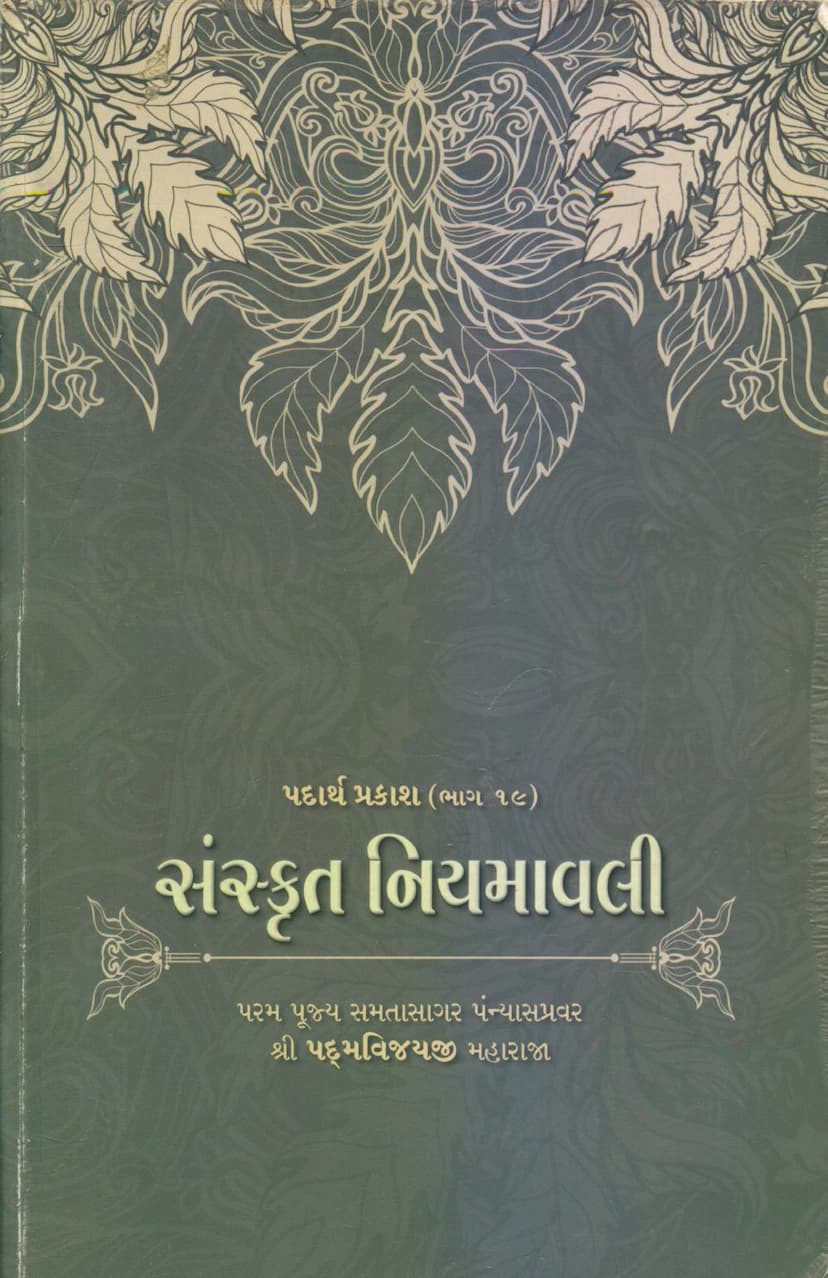Padarth Prakash 19 Sanskrit Niyamavali
Added to library: September 2, 2025
Loading image...

Summary
This Jain text, "Padarth Prakash (Part 19) Sanskrit Niyamavali" by Vijayhemchandrasuri, published by Sanghvi Ambalal Ratanchand Jain Dharmik Trust, is a comprehensive guide to Sanskrit grammar. The book aims to simplify the learning of Sanskrit, a language crucial for understanding Jain scriptures.
Key aspects of the book include:
- Compilation and Authorship: The compilation is attributed to H.H. Samatasagar Pannyas pravar Shri Padmavijayji Maharaj, a disciple of Acharya Shri Mad Vijay Premsoorishwarji Maharaj and Acharya Shri Vijay Bhuvanbhanusoorishwarji Maharaj. The editing is done by H.H. Viracharya Shri Vijay Hemchandrasurishwarji Maharaj, a disciple of H.H. Samatasagar Pannyas pravar Shri Padmavijayji Maharaj.
- Purpose: The primary goal is to make Sanskrit accessible and easy to learn, enabling individuals to delve into the profound Jain scriptures. The text emphasizes that Sanskrit is the "language of the gods" (Gervanbhasha) and, despite its numerous rules, can be mastered through systematic study.
- Content Structure: The book systematically covers various aspects of Sanskrit grammar, including:
- Phonetics (Varn Vichar): Detailed explanation of vowels, consonants, their classifications, and concepts like guna and vridhi.
- Verb Conjugation (Kriyapad): Comprehensive rules for tenses (10 types), including present, future, and various past tenses, as well as mood conjugations like imperative, subjunctive, optative, etc. It also explains the concept of "Gana" (verb roots divided into 10 classes) and their impact on verb forms.
- Sandhi: Rules for vowel sandhi (Swar Sandhi), visarga sandhi (Visarga Sandhi), and consonant sandhi (Vyanjan Sandhi).
- Declension (Vibhakti): Detailed explanation of the seven cases and their Sanskrit suffixes, along with examples, and guidelines for memorizing noun declensions.
- Syntax (Vakyarachana): Rules for sentence construction, including active and passive voice.
- Indeclinables (Avyaya): Explanation of prefixes (Upasarga) and their impact on verb meanings.
- Kridanta (Verbal Suffixes): Detailed explanation of various kridanta suffixes like 'tum' (for purpose), 'tvā' (gerund), and 'kta' (past passive participle), along with their rules and usage.
- Anomalous Verbs: Discussion of irregular verbs belonging to specific Ganas.
- Nouns and Pronouns: Rules pertaining to nouns ending in consonants and pronouns.
- Samasa (Compound Words): An extensive section covering various types of Sanskrit compound words like Dvanda, Tatpurusha (with its sub-types), Karmadharaya, Bahuvrihi, and Avyayibhav Samasa, with numerous examples.
- Taddhita: Rules for derivational suffixes that form new words from nouns.
- Namdhatu: Formation of verbs from nouns.
- Pedagogical Approach: The book is presented in a clear, concise, and systematic manner, likened to mathematical problems, making the complex rules of Sanskrit understandable. It also acknowledges the contributions of various individuals and trusts involved in its publication.
- Inspiration: The text highlights the importance of scripture study for overcoming illusions and gaining true knowledge, positioning Sanskrit knowledge as a "master key" to unlock these scriptures.
In essence, "Padarth Prakash (Part 19) Sanskrit Niyamavali" is a valuable resource for anyone seeking to learn Sanskrit for spiritual and scholarly pursuits within the Jain tradition, offering a structured and accessible approach to mastering the intricacies of this ancient and sacred language.